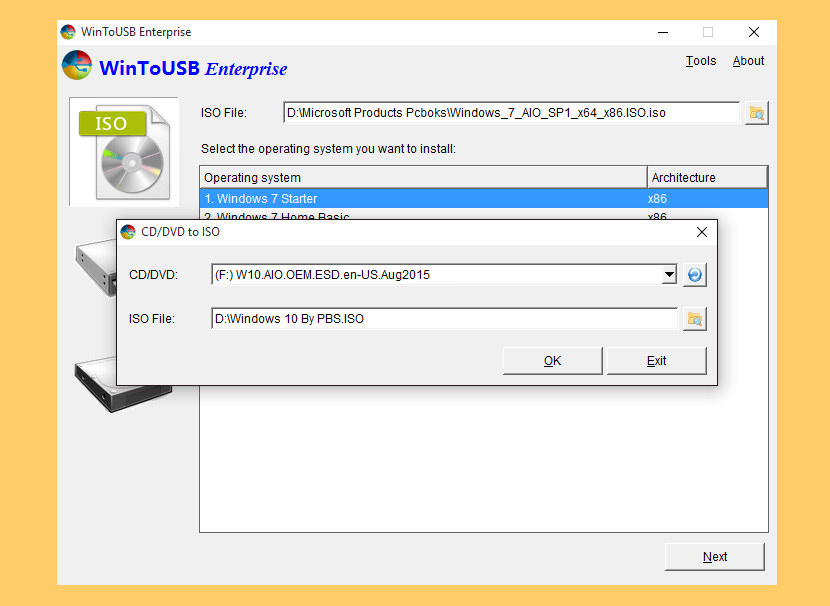
After getting it to work and doing more testing I was able to determine that the boot image is already on the windows ISO as a file you can point to directly, For windows 10 (And I think earlier versions as well) it is located at /boot/ on the original ISO. This post was great! I was finally able to get a bootable windows ISO installed. J -l -D -N -joliet-long -relaxed-filenames. new-win.iso -b boot.img -no-emul-boot -c BOOT.CAT \ Now with all the information collected above, we can (with a great deal of experimentation) come up with a mkisofs command line that makes a bootable image: The boot image required to boot it is 8 sectors long (“Nsect 8”) starting at sector number 734 (“Bootoff” in decimal).ĬD sectors are 2048 bytes, so we can grab the boot image directly: What is interesting is that it’s an El Torito no-emulation bootable disk. There is no obvious “cdboot.img” file which is what we will need in order to boot this thing.

The format is UDF, the DVD replacement for ISO 9660. Welcome to guestfish, the libguestfs filesystem interactive shell for

Firstly I mount it up in guestfish to take a look around: It’s a good idea first to find out what format the existing Windows 7 ISO is in. Making it bootable involves an exploration of the command line options to “mkisofs” and a quick excursion into the ISO format. The problem is that the new ISO will not be bootable, so you won’t be able to use it to install Windows from. If you add your own files into the /tmp/cd directory between the third and fourth steps then they will appear on the new ISO.

win.iso -m /dev/sda tar-out / - | tar xf. You can unpack and repack an ISO file like this (and because we’re using libguestfs, root is not required): The recommended way to modify them - using multisession support - doesn’t work for virtualization because the virtual CD drives don’t support it (nor do quite a few real CD drives). However modifying ISOs is a palaver: they are write-once filesystems. I’m told that if you want to pass additional files to Windows when it is installing, you have to put them on the actual install CD/ISO.


 0 kommentar(er)
0 kommentar(er)
